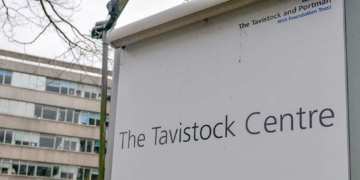In the last few days, the Court of Appeal has scheduled the much-anticipated appeal in Bell v Tavistock for late June for a hearing expected to take two days. The Court of Appeal may well be an intermediate stage in this case with many commentators expecting this matter to be resolved ultimately in the highest court in the land, the Supreme Court.
The original case was brought by way of judicial review, (a form of lawsuit for questioning decisions of public bodies like NHS Trusts), with the court considering a challenge to the treatment regime and practices of prescribing puberty blockers (“PBs”) to children and young people treated for gender dysphoria at the Tavistock. That point is sometimes lost in the debate on the judgment and it’s important to recognise the court was not pronouncing on the rights and wrongs of any individual case, which would properly be a matter for any court considering say damages for medical negligence, a completely different matter in law. The original High Court judgment held that PBs were correctly described as an experimental treatment and that prescribing them to under 13s was “highly unlikely” to be lawful and “doubtful” in the case of those aged 14-15. For those above that age, where there was doubt as to the long-term interests of the young person, a court should be consulted.
The basis for that decision, and the likely focus in the Court of Appeal, revolves around the legal concept of “Gillick competence”. In 1985 Victoria Gillick ran a campaign against a Health policy advising doctors they could prescribe contraception to under 16s. In a markedly different “moral” and political climate, “parental rights” and encouraging immorality and underage sex were pitted against the question of whether the under 16s could properly give informed consent. The highest court in the land held they could indeed give such consent provided they fully understood the medical treatment proposed. In Bell v Tavistock, the age categories and corresponding likely ability to consent were based on this concept, that is to say whether a patient prescribed PBs was “Gillick competent” to lawfully consent to that treatment.
The basis for the High Court’s decision is likely to be the focus of the appeal so it’s useful to look in detail at the reasoning in the judgment. The first pillar of the judgment is perhaps the conclusion that PBs did not seem to provide a “pause to think” as had been suggested, but instead appeared to be the first step on a path to lifelong medicalisation with associated impacts on fertility and sexual function. The second was the conclusion that suggestions the treatment was reversible without long term adverse medical effects relied on the quite different and disanalogous condition of early onset puberty. One clear theme in the judgment is the lack of evidence in this area and the court expressed repeated “surprise” at the failure of the Tavistock to retain, record or furnish the court with evidence or analysis of the long term consequences of the treatment or an explanation for why, (amongst many other questions), the numbers of patients rose drastically from 97 patients in 2009 to 2519 in 2018 and the gender balance shifted from approximately 50/50 male and female to a ratio of 76 natal female in 2019. The absence of evidence point is a crucial one, the court wasn’t simply lamenting shoddy practices; it was in effect asking how a patient could fully understand any treatment (and thereby be “Gillick competent”) if the medical establishment themselves had no meaningful long-term evidence or understanding of it?
The disjuncture between the judgment and the popular reaction to it were pronounced. The concepts of “trans rights” or “gender critical” viewpoints which featured so heavily in the reception to the judgment (particularly on social media) are nowhere to be found in judgment itself. Despite the fact it deals with one of the most contentious and fierce debates in LGBT politics, the judgment is based not in the language or concepts of rights or debates, but in the clinical and arguably calmer language of patients, capacity and consent. What then, will this appeal look like, and what can we expect?
Well first, expect the Court of Appeal to frame the central question in a similar if not identical manner as the High Court, great pronouncements on rights or contentious debates are highly unlikely. This much is suggested by the fact organisations such as Stonewall have been refused permission to intervene (and therefore appear) at the appeal whereas organisations offering medical evidence, such as the Endocrine Society have succeeded. The core of the appeal is likely to revolve around the argument that the intensely personal, private nature of a Gillick competent decision is individual matter between a doctor and patient and therefore not a matter where the High Court can prescribe age categories. Expect too, the evidence base to have moved on significantly from the High Court, since that hearing the Tavistock was graded inadequate by the CQC and a 2011 study on “Early Intervention” is now available.
Ultimately, as in the High Court, expect a legally detailed and science-based inquiry into medical practice standing in strong contrast to the turbulent and often fierce public debate which accompanies this issue. As has been the case up to now, expect the court to speak in one language and twitter in another.
Dennis Kavanagh is a legal commentator and barrister (non-practising).























Comments
No comments yet, be the first to leave a comment.